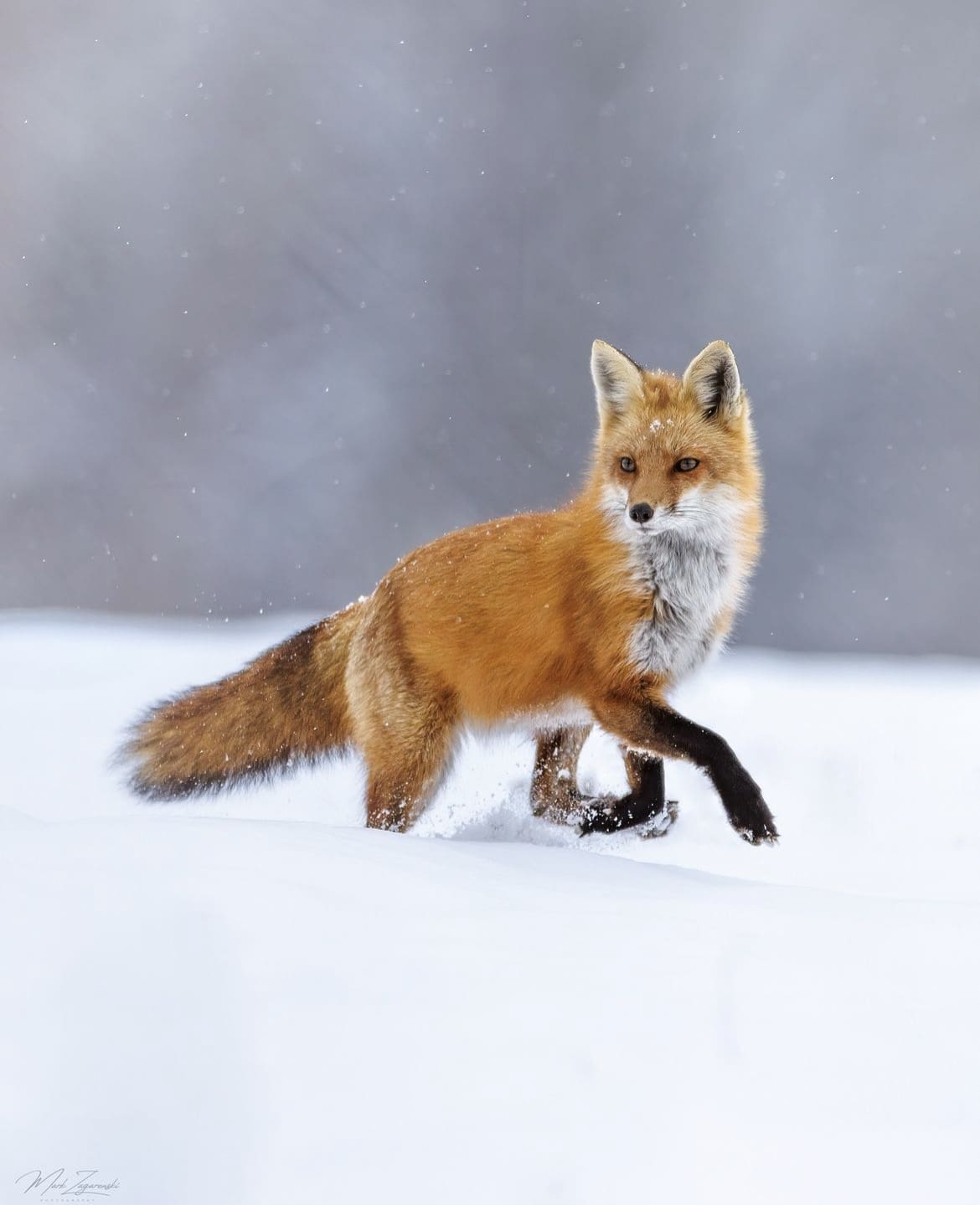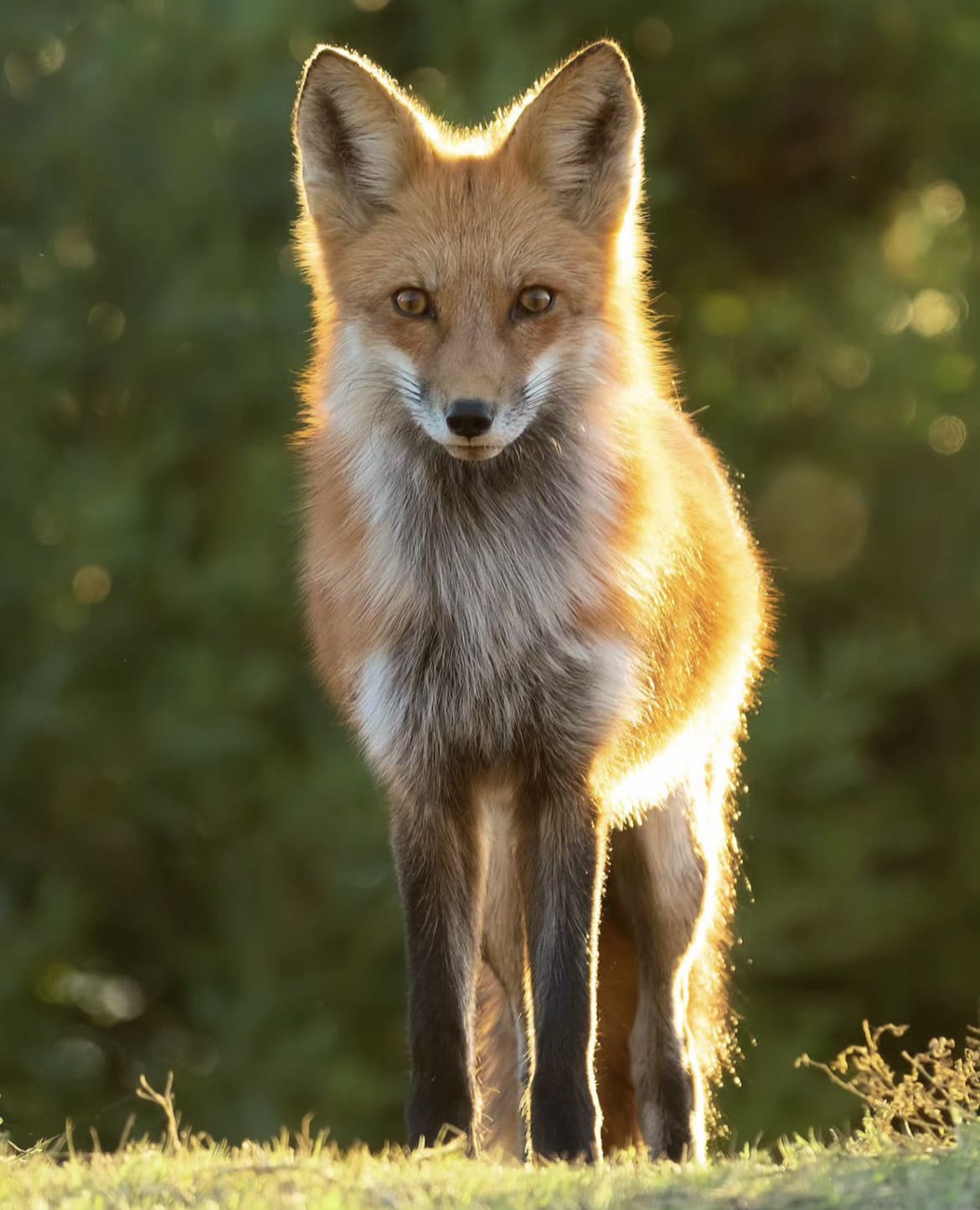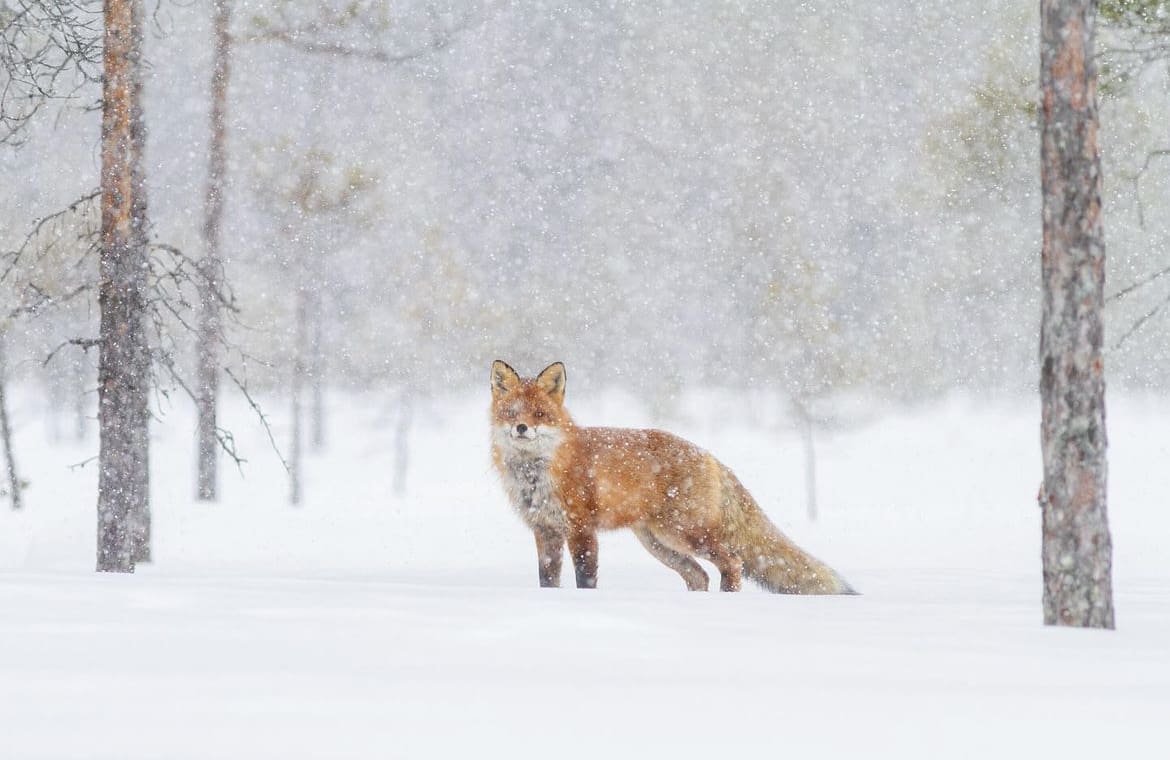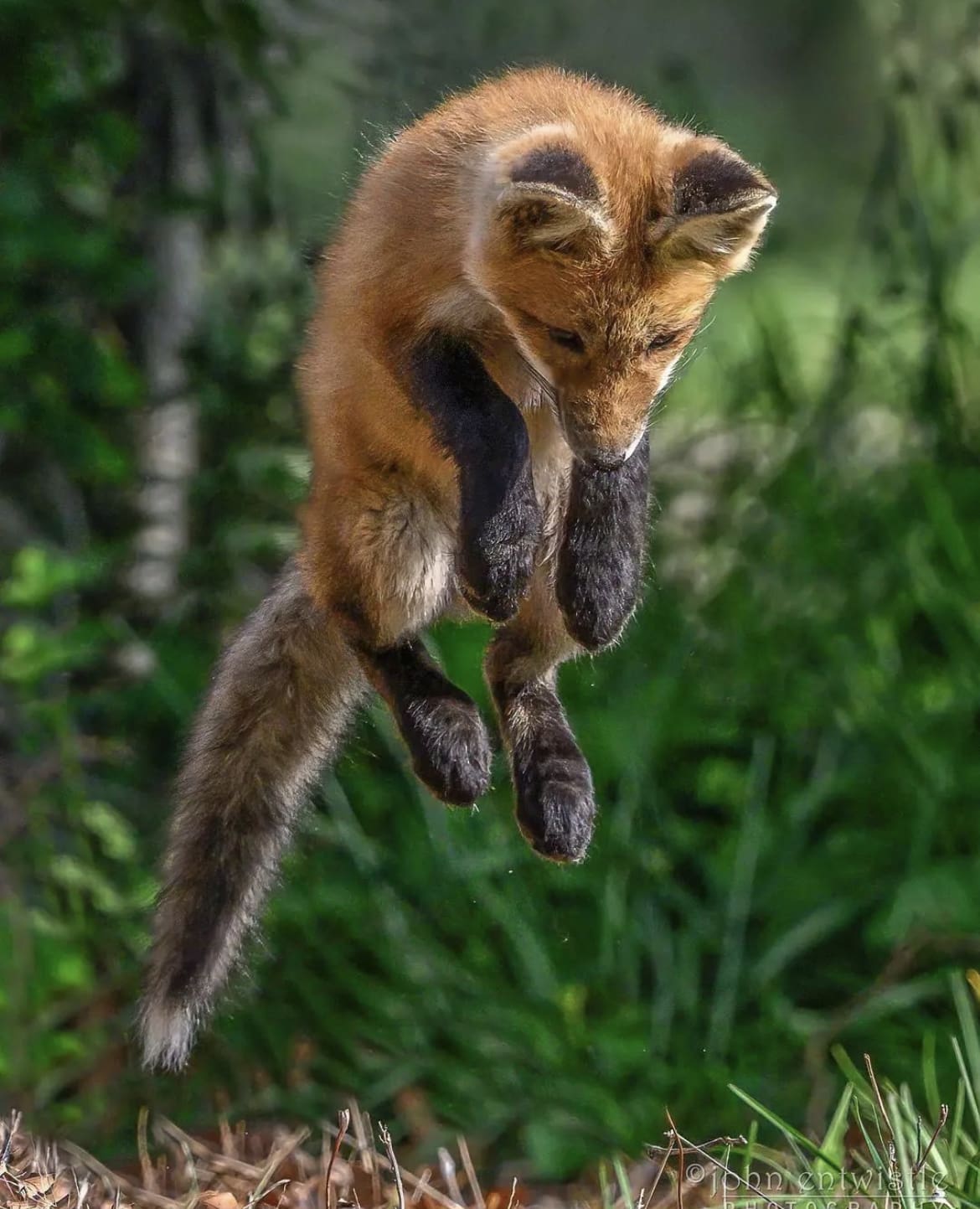The Red Fox is a fascinating creature, often surrounded by mystery and misunderstanding.
Let’s dig into the myths and uncover the real story behind these fiery-furred animals.
What is the Red Fox?
Think of the ultimate survivor, wrapped in a coat so striking it could make fashion designers jealous. That’s the Red Fox—a clever and resourceful member of the Canidae family. You’re just as likely to spot one in a quiet forest as you are in the middle of a bustling city.
But it’s not just their good looks that make them stand out. Red Foxes are smart, adaptable, and masters of making a home wherever they land. From freezing Arctic tundras to scorching deserts, they’ve proven they can thrive just about anywhere.

What Do Red Foxes Look Like?
The Red Fox is a medium-sized, dog-like animal with a stunning coat that ranges from deep red to golden orange. They’ve got sharp, pointed ears, a bushy tail with a white tip (like they dipped it in paint), and a long, sleek snout. And their eyes? Sharp and bright, with a cheeky glint that’s a little eerie when you catch them glowing in the dark.
Their coat isn’t just for looks—it’s a genius design. It helps them blend into all kinds of environments, whether it’s snow-covered ground or a leafy forest floor. That fluffy tail isn’t just decoration either. It’s their all-purpose tool: a blanket, a signal flag, and a balance aid all in one.
How Big Are Red Foxes?
Red Foxes measure 45–90 cm (18–35 inches) from nose to base of the tail, and their impressive tails add another 30–55 cm (12–22 inches). Standing 35–40 cm (14–16 inches) tall at the shoulder. They’re about the size of a medium dog.
Males, called “dogs,” are usually a bit heavier than females, or “vixens.” They weigh around 6.5 kg (14 lbs), with females coming in slightly lighter.
This compact size makes them quick and agile, perfect for chasing down prey or making daring escapes.
Red Fox Skin
Beneath that beautiful fur, the Red Fox’s skin is tough and built for survival. It acts as a barrier against the elements and helps them bounce back from scrapes and scratches.
The density of their fur changes with the seasons: thick and cozy in winter, light and sleek in summer. This seasonal wardrobe swap is a survival superpower, letting them thrive in a wide range of climates—from snowy forests to sweltering urban landscapes.

Red Fox Teeth
Red Foxes have 42 sharp teeth, perfectly designed for their diet. The long canines help grab and hold onto prey, while their molars are ideal for crunching bones. These teeth are built for efficiency, whether they’re feeding on a small rodent or snacking on some fruit.
Their teeth also play a role in communication. A nip or a playful bite is part of how they interact with each other, whether they’re settling an argument or just goofing around.
Red Fox Coloration
One of the first things you’ll notice about a Red Fox is its stunning coat. While we usually picture them in their classic red, they can range from rich, deep auburn to light gold, and even silver-black. This variety isn’t just about looking good—it’s a survival tool. Their reddish fur helps them blend into woodlands and grasslands, making them harder to spot by both predators and prey.
In winter, their coats become thicker and often darker, giving them extra warmth and better camouflage against snowy backdrops. This ability to adapt their appearance to the environment is one of the reasons Red Foxes are such skilled survivors. Whether they’re hunting or hiding, they’re always dressed for the occasion.
Red Fox playing in the snow | @liron_gertsman_photography
What Do Red Foxes Eat?
Red Foxes are the ultimate opportunists when it comes to food. They mostly eat meat—things like rodents, rabbits, birds, insects, and even fish. But they’re not picky. When meat is hard to find, they’ll eat fruits, vegetables, and berries. This flexibility in their diet helps them survive in all kinds of environments and seasons.
They’re just as good at hunting as they are at scavenging. Whether it’s searching for food in the woods or digging through a suburban trash bin, they make the most of what’s available. This adaptability is one of the reasons they’ve been so successful at living close to humans.
How Do Red Foxes Hunt?
Red Foxes are solo hunters and rely on their sharp senses and quick reflexes to catch their prey. They’re great listeners and use their keen hearing to detect small animals moving underground or under snow. When they lock onto their target, they perform their signature move: a high pounce that lands them right on top of their meal.
This hunting style, called “mousing,” shows just how clever and skilled they are. They also know how to stalk prey, staying hidden until they’re close enough to attack. Whether they’re in wide-open fields or sneaking around city streets, Red Foxes are experts at finding their next meal.
Read Next:
- Get to Know The Olive Ridley Turtle
- Get To Know The Macaw
- Get To Know The Blob Fish
- Get To Know The Orangutan
- Get to Know the Arctic Fox

Red Fox Social Structure
While they’re known for hunting and living alone, Red Foxes actually have a pretty interesting social life. They’re like independent workers who team up when it’s useful. They mark and defend their territories to keep rivals away, but within their family group—called a “leash”—they can be quite social.
The family unit is at the heart of their social life. It usually includes a pair of mates and their kits. Sometimes, older siblings from a previous litter stick around to help raise the new kits. This teamwork makes it easier to protect their territory and care for the young.
How Do Red Foxes Reproduce?
Spring is baby season for Red Foxes. After about 51–53 days of pregnancy, a vixen gives birth to 4–6 kits on average. The kits are born blind and helpless, relying completely on their mom and the family for care and safety. Both parents, and sometimes older siblings, pitch in to feed and protect them.
The kits are raised in a den, often a burrow dug into the ground, where they stay for the first few weeks of their lives. This is a busy time for the family as the young foxes learn how to survive by playing and watching their parents. The family’s close bond is crucial in helping the kits grow into strong, independent adults.

How Long Do Red Foxes Live?
Life in the wild isn’t easy for a Red Fox. On average, they only live about 3 to 4 years due to the constant challenges they face, like finding food, avoiding predators, and dealing with human threats. However, in captivity, where these dangers don’t exist, they can live much longer—up to 14 years.
This big difference in lifespan shows how tough life in the wild can be. Predation, disease, road accidents, and hunting are some of the main reasons their lives are cut short. Despite this, Red Foxes are incredibly resilient, adapting to rural and urban environments and continuing to thrive against the odds.
Are Red Foxes Aggressive?
Red Foxes aren’t aggressive by nature. In fact, they’re usually shy and cautious, preferring to avoid trouble rather than confront it. While they can defend themselves if cornered, they’re more likely to run away than fight. When they encounter humans, they’re more curious than hostile.
When it comes to other animals, they tend to keep their distance unless it’s mating season or they’re protecting their young. Even then, their actions are more about defense than aggression.
@conny_lundstrom
Are Red Foxes Territorial?
Red Foxes are very territorial. They stake out areas that they defend with scent marking and body language rather than outright fights. These territories provide them with food, shelter, and space to breed. The size of their territory depends on how much food is available—smaller areas in resource-rich places and larger ones where food is scarce.
When disputes happen, they usually settle them through displays of dominance, such as vocalizations or posturing, instead of physical confrontations. This territorial behavior is essential for their survival, helping them balance their population with the resources around them.
Where Do Red Foxes Live?
Red Foxes are masters of adaptability, making their homes in a wide range of environments. They can thrive in dense forests, open countryside, Arctic tundras, and even urban areas.
In cities, they’ve learned to live alongside humans, creating dens in parks, empty lots, or even under sheds. With plenty of food and fewer predators, urban areas have become a new kind of habitat for them.
@chris.a.fraley
How Many Red Foxes Are There in the Wild?
It’s hard to pin down an exact number of Red Foxes in the wild because they’re spread out across so many different environments. Their adaptability and widespread distribution make them tricky to count. However, we do know their populations are strong in many areas, thanks to their ability to live just about anywhere.
Even though they face threats like habitat loss, hunting, and disease, Red Foxes are incredibly resilient. Most regions classify them as “Least Concern” when it comes to conservation, meaning their populations are stable or even growing.
Are Red Foxes Endangered?
Red Foxes are not endangered. They’re listed as “Least Concern” on the IUCN Red List because they’re found in so many places and have large populations. But that doesn’t mean they don’t face challenges.
@johnentwistle_photography
Threats to Red Foxes in the Wild
One of the biggest threats facing red foxes is habitat loss due to urban development, farming, and deforestation, which takes away their hunting grounds and places to live. Traffic is another major danger, with many foxes killed by cars each year.
Diseases like mange, rabies, and canine distemper are also big threats. These illnesses can wipe out fox populations, especially when combined with other stresses like a lack of food or changes in the environment.
Hunting and trapping also affect their numbers. In some places, people hunt Red Foxes because they see them as a threat to livestock or poultry. In others, they’re hunted for their fur, although this practice has declined in areas where animal rights and conservation are a priority.
Where to See Red Foxes
Red Foxes live across the Northern Hemisphere and can be found in all sorts of environments, from forests and grasslands to mountains and deserts. They’ve also made themselves at home in urban areas, where you might spot them in parks, gardens, or even cemeteries.
If you’re hoping to see one in the wild, national parks and nature reserves are great places to start. These areas offer plenty of space for wildlife and fewer human disturbances. Red Foxes are most active during early morning and late evening, so those are the best times to catch a glimpse.
In cities, check out quiet spots with lots of cover, like large parks or golf courses, where foxes can hunt and explore without too much interference.

Tips for Spotting Red Foxes
Seeing a Red Fox in the wild takes patience, a bit of strategy, and some luck. Here are a few tips to improve your chances:
- Stay Quiet and Still: Foxes are easily spooked by noise or sudden movements. Find a good spot, settle in, and wait quietly.
- Look for Signs: Tracks, droppings, or food remains can clue you into areas where foxes are active.
- Listen Closely: Sometimes you’ll hear a fox before you see it. Their calls, especially during mating season, are a dead giveaway.
- Use Binoculars: Keep your distance to avoid scaring them and use binoculars for a closer view.
- Respect Their Space: Never feed or approach a fox. It’s safer for both you and the fox to keep a respectful distance.
Facts About the Red Fox
- Adaptable Diet: Red Foxes are omnivores and eat a wide range of foods, from small animals like rodents and rabbits to fruit and vegetables.
- Vocal Creatures: They communicate with barks, howls, and even screams, especially during mating season.
- Global Reach: Red Foxes are found in more countries than any other wild carnivore.
- Skilled Hunters: They use the Earth’s magnetic field to help them judge distance and direction when hunting.
- Family-Oriented: Red Foxes live in family groups called “leashes” or “skulks” and cooperate to raise their young.
Myths About the Red Fox
- Foxes Are Always Solitary: While they do hunt alone, Red Foxes often live in family groups and have complex social lives.
- All Foxes Are Red: Red Foxes come in a variety of colors, including black, silver, and cross-colored patterns.
- Foxes Are Pests: Though they sometimes clash with humans, foxes are vital for controlling rodent populations and maintaining ecosystem balance.
- Foxes Are Dangerous: Fox attacks on humans are extremely rare. They are naturally shy and prefer to avoid confrontation.
Red Fox vs. Jackal
Let’s clear up a common mix-up: Red Foxes and Jackals are like distant cousins who live completely different lives.
Jackals, with their slim builds and golden coats, live in Africa and parts of Asia. You’ll usually find them in savannas and deserts, surviving in ways that suit those wild environments.




